Understanding the Gag Reflex and Why Babies Gag on Food with Dawn Winkelmann, MS, CCC-SLP
- Why babies gag on food and what’s happening inside their mouth when they are gagging
- How to react when your baby gags on food so that you don’t increase the risk of choking
- When gagging starts to subside in both frequency and intensity…and why gagging is a good thing!
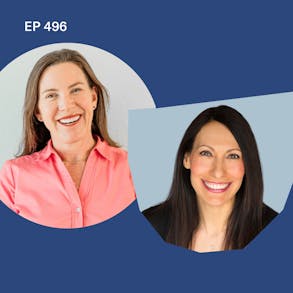
LISTEN TO THIS EPISODE
Episode Description
The gag reflex is a natural and necessary part of your baby’s feeding development, but it can be a source of anxiety for parents starting solid foods. In this episode, Dawn Winkelmann, MS, CCC-SLP, a speech-language pathologist and pediatric feeding expert, breaks down what the gag reflex is, why babies gag on food, and how to distinguish between gagging and choking. Learn practical strategies to support your baby through this phase and build confidence in their ability to learn to safely eat real food.

About the Guest
- Dawn Winkelmann is a pediatric feeding and swallowing expert
- She is the product designer for ezpz and she makes developmental feeding gear for babies
Links from this Episode
- Choking Prevention and Response Course co-taught by Katie, Dawn and CPR Instructor Brandon Doerksen (use code KATIE10 for an additional $10 off): https://courses.thrivetraininginstitute.com/pages/babyledweanteam
- ezpz Oral Development Tools (use affiliate code KATIE10 for 10% off) - shop Oral Development Tools here.
- Baby-Led Weaning with Katie Ferraro program with the 100 First Foods™ Daily Meal Plan, join here: https://babyledweaning.co/program
- Baby-Led Weaning for Beginners free online workshop with 100 First Foods™ list to all attendees, register here: https://babyledweaning.co/baby-led-weaning-for-beginners
Other Episodes Related to this Topic
- Episode 4 - Gagging vs. Choking: What is the Difference?
- Episode 238 - 5 Choking Prevention Tips with Brandon Doerksen

Latest Episodes
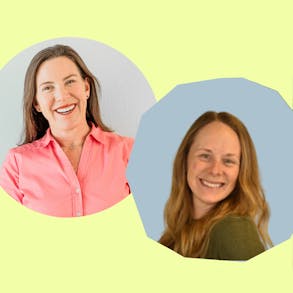
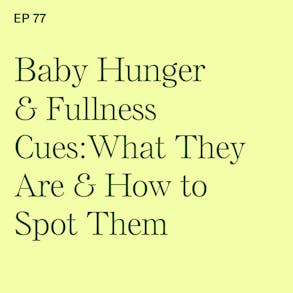
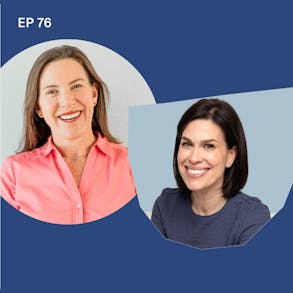
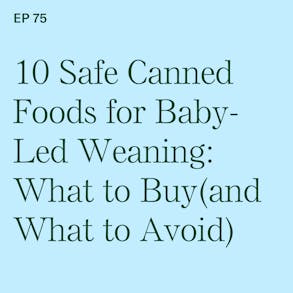
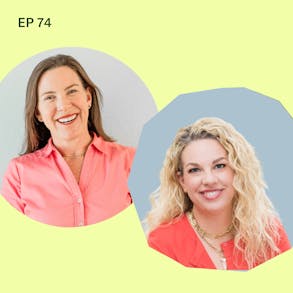
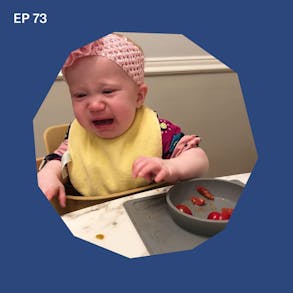
Katie Ferraro (0s):
Let's say you're interested in Baby-Led Weaning, but your baby goes to daycare. What if I work and my baby goes to daycare? What does that look like? Or what if they tell me that they're not gonna do Baby-Led Weaning at daycare? Well, you are daycare childcare providers. They are allies with you in starting solid foods. They're not your adversary. But I also get that it can be hard to have the conversation with daycare where you're like, so, okay, we're not gonna be force feeding our baby pureed food by spoon here. If you want the exact scripts of what to say and how to talk to your daycare respectfully and in an informed way about Baby-Led Weaning, I have a free feeding guide called How to Be a Baby-Led Weaning Advocate at Daycare.
Katie Ferraro (41s):
This free feeding guide is packed with practical and actionable tips about what to do and what to say when it comes to helping get your daycare provider on board with Baby-Led Weaning. So you can be like the mom who wrote to me that her daycare said her baby is the best eater in the infant room. You can download How to Be a Baby-Led Weaning Advocate at daycare and all of my other free feeding guides, they're all on my website, babyledweaning.co/ resources.
Strollercoaster (1m 9s):
Okay, parenting is hard for sure, but this is easy. Listening to Stroller Coaster. Stroller Coaster is a podcast hosted by Lynn Smith. She's a mom and former news anchor for NBC and the show's co-hosted by an improv comedian. Stroller Coaster is a place to be entertained to laugh over crazy parenting moments. And I know I for one, have definitely learned a few new things as I listen along to Stroller Coaster is an award-winning, top ranked parenting podcast created by Munchkin, the most loved baby lifestyle brand in the world. And the show covers topics that I know are also of interest to you, like how to stay connected to your kids once they're in daycare, in school, or what your child is trying to communicate to you when they're crying and how to hold onto your patients as a parent. You can follow Stroller Coaster on Apple Podcasts, Spotify, or wherever you get your podcast. Go give them a listen for a great time. I, for one, know I've really been enjoying the show and I always need something new to listen to. Check out Stroller Coaster, I think you'll enjoy it as well.
Dawn Winkelmann (2m 15s):
So a baby who's progressing well will still continue to show curiosity about the foods even though they're gagging. And that's what is really important for me as a feeding therapist. When a family calls me and they say, my baby's gagging all the time, and I'm like, are they still interested in eating? Are they still wanting to eat? Are they still curious about food? And that's not really an issue.
Katie Ferraro (2m 35s):
Hey there, I'm Katie Ferraro, registered dietitian, college nutrition professor and mom of seven specializing in Baby-Led Weaning here on the Baby-Led Weaning with Katie Ferraro podcast. I help you strip out all of the noise and nonsense about feeding, giving you the confidence and knowledge you need to give your baby a safe start to Solid Foods using Baby-Led Weaning. I remember very vividly the gaggiest baby that I ever worked with. So we were doing, my friend Christina was her second baby's first 10 days of baby-led meeting together. She was coming over for parent coaching every day at my house and she was gonna do the 100 First Foods challenge and baby-led wing, just like she did with her first baby, but with her second baby.
Katie Ferraro (3m 21s):
She said, oh, this baby's a little bit different because she has a really sensitive gag reflex. And at first I was thinking to myself, yeah, sure, whatever, every baby gags on food. And maybe my friend the mom, she just probably forgot what it's like since it's been a couple of years since her older child started Solid Foods. So we start out day one, just some easy, you know, avocado strips. Oh my gosh, I have never seen a baby gab so prolifically and so early and for so long in the entire starting solid foods process. My friend Christina is a nurse, so she knows her stuff and she, she's like, see I told you she was really sensitive. And I was like, oh my gosh. Like this baby is gagging like crazy, but still continuing to put the food in her mouth.
Katie Ferraro (4m 6s):
And actually the mom told me that her baby was so sensitive that she even at six months of each was still gagging on her pacifier to the point they just like decided not to use the pacifier. It wasn't worth it 'cause she was just like, they didn't wanna traumatize her basically. And every baby is different as we all know. But at some point in the process of learning how to eat Solid Foods, your baby is going to gag on food. And gagging is a natural and necessary part of learning how to eat. But interestingly, most babies, they don't really gag that much early on in Baby-Led Weaning. And that's usually because they're not actually getting that much food into their mouth in order to trigger the gag reflex. It's once they really start getting the hang of moving that food around their mouth, that the gagging becomes more pronounced.
Katie Ferraro (4m 49s):
And when it does, parents have a tendency to freak out and understanding the difference between gagging and Choking and then of course coordinating our response because they're very different for how we respond or don't respond to gagging versus actual Choking. And today we're going to be talking all about the gag reflex and what it means and why it happens. My guest is Dawn Winkelmann, a very good friend of mine, a very well-known pediatric feeding expert. Dawn is a speech language pathologist. So she is gonna get down on all of the mechanics that are going on in your baby's mouth once they start Solid Foods because there is a lot going on at this point I want you to listen 'cause we're gonna talk about why babies gag on food and what's happening inside of their mouth when they do we'll cover How to react when your baby gags on food so that you don't increase the risk of Choking.
Katie Ferraro (5m 37s):
We'll talk about when gagging starts to subside both in frequency and in intensity and why gagging is actually a good thing. So if you have been holding off on offering trickier textures to your baby 'cause you're scared like oh my gosh, when they gag, I don't know how to handle it. I hope you listen to this entire interview because I think it will really, really help calm your fears.
Ezpz (5m 57s):
You can find Dawn online, she's at msdawnslp.com. She's also the product designer for ezpz. So EZPZ is a company that makes developmentally appropriate feeding gear. Dawn designs all of it. She's gonna mention a couple of the products that are particularly helpful in the pre feeding phase before your baby starts Solid Foods. And when they do start Solid Foods, if you want to check out any of the gear from EZPZ, my affiliate discount code is Katie 10. That always works for 10% off at ezpzfund.com. You can pull it don on social media at Ms Dawn SLP or see her website msdawnslp.com.
Katie Ferraro (6m 34s):
We also co-teach a Choking prevention and response course. So for parents who are really, really anxious about gagging and Choking, we developed this course that we co-teach along with a certified CPR instructor. It is way more in depth than most parents need, but we totally acknowledge that There's some parents who are like, Hey, I learned the basics and I'm still scared about gagging and Choking. And if that's you, you might want to check out our Gagging Prevention and Response course. You can get an additional $10 off of that program, same code KD 10 and I will link that up in the description as well as the show notes page for this episode. So with no further ado, I wanna bring on Don to talk about understanding the gag reflex and why baby's cat on food.
Dawn Winkelmann (7m 23s):
I work with a lot of families and one of the families that I worked with, I teach what I call the tone technique. And the tone technique is a vocal tone and that tone is described as warm and calm and educational. For example, imagine that you're on a walk with your child and a dog barks unexpectedly and you calmly reassure your baby with language that is like this, oh it is just a dog and he's talking to us. So I use that nice calming tone when we're talking about gagging. Oh, it's just a gag and you're learning to eat to be able to have that calm educational voice. And this particular mom was saying, oh my gosh, before I was trying to like administer that tone to keep my baby calm.
Dawn Winkelmann (8m 10s):
And I realize I'm using that tone every single meal just to keep myself calm because it's reminding me like, oh yeah, my baby is learning all about how to eat. My baby is learning how to move their tongue. My baby is learning how to be able to use their cheek muscles in a particular way and it kind of helps be a good little mantra. So a lot of the families that I work with say, I used your mantra, I used your mantra, and it kind of helps make gagging a little bit more fun and exciting that instead of being scared, it's more of a learning opportunity
Katie Ferraro (8m 40s):
As a former, like a recovered dislike of dogs who now has a dog, which can you believe when we started this podcast that there would be a time when on episode 496 I would say that I have a dog and like a dog. Dawn was the friend that had dogs, love dogs. I didn't love dogs, but I would say I was scared of them them 'cause people don't like when you say when you don't like dogs. But then we got a dog. But before I had a dog I would use Dawn's suggestion, which was like if you're out walking your baby around in a stroller. And for me I was always scared that a dog was gonna like rip my baby's face off. So whenever a dog came close, I would be like channeling Dawn and say, it's okay baby, it's just a dog. Yeah, he's not gonna do anything to you. And turn that into when a baby's gagging on food. It's okay baby. Yep. You're just gagging on food.
Katie Ferraro (9m 21s):
Nothing bad's gonna happen to you even though you like don't believe it. Deep down you think the dog's gonna rip your baby's face off. You think your baby's gonna choke on food. So Don, let's back it up because we wanna prevent Choking and one of the ways we do that is by not intervening during a harmless gag. Can you start by explaining what the gag reflex is and why it is such an important part of a baby's feeding development?
Dawn Winkelmann (9m 43s):
Yeah. So a gag reflex is a natural safety mechanism that helps protect your baby's airway, especially as they learn to eat and explore new foods. It is essentially a response that pushes food or an object back towards the front of the mouth to prevent any material going too far back and potentially causing Choking. What's really interesting is that the gag reflex is more forward in a baby's mouth compared to an adult. So it's at the very tip of the tongue. So when an object or a food or texture or even a utensil touches that tip of that tongue, a gag reflex is going to start to emerge.
Dawn Winkelmann (10m 29s):
This means that in the early years, the early months of of starting solids, that gag is gonna be very easy. So parents can be surprised by this or even alarmed by this when they get started. But know that as you do this week after week after week, even though this gag reflex plays a really crucial part in feeding development, it's going to allow your baby to manage food in their mouth, move it around safely, and build the oral motor skills they need for chewing and swallowing. So over time, as babies gain more experience with different textures, let's say you're doing purees and and trying yogurt and then the next meal you're really working on those strips of foods as they practice with solids, that gag reflex will naturally move farther back into the mouth.
Dawn Winkelmann (11m 17s):
So while it can seem really scary at first, gagging is actually a sign that baby's oral development is on track and their body is doing exactly what it's supposed to do. And then as your baby's mouth it starts to grow and and respond, you might see gagging happening again. So that's why I always tell families every month you look into your baby's mouth with a tongue depressor and observe that because you might be like, oh my gosh, my baby's nine months old. And why are they gagging like they were when they're six months of age? Well it's because everything just grew. The tongue got a little bit bigger, the gum line got a little bit longer, the palate got a little bit higher. So as your baby is exploring these same foods that you've been offering for months and the gagging starts up again, remember that that is a critical role in feeding development is that gag is supposed to help protect that airway as your baby's mouth is growing and as your baby's becoming more familiar with foods.
Katie Ferraro (12m 15s):
Hey, we're gonna take a quick break, but I'll be right back. So Dawn, tell us why babies gag on food and then how is that different than Choking?
Dawn Winkelmann (12m 31s):
So gagging happens when food triggers the reflex, right? That gag reflex causing the baby to push the food forward or spit it out, it's actually a positive sign that their body is working to protect them. That's what we are wanting. I see as a feeding therapist, babies that do not have a gag reflex. So we just don't know if their body is working to kind of protect that airway. A gag is a really a good thing and Choking on the other hand is more serious and it occurs when food or an object becomes lodged in the airway. Blocking, breathing, unlike gagging where you're hear like coughing and different sounds or you'll see movement with your baby. Choking is quiet, it is silent.
Dawn Winkelmann (13m 12s):
A baby is truly Choking when they're not able to cough or cry or make any noise and not really alert you. They're, they're usually the babies that I've seen that have truly choked, completely are shocked, they're really not moving at all. So understanding the difference is important because gagging is a normal part of the learning process, whereas Choking requires your intervention and may even acquire, may even require additional medical intervention.
Choking Prevention and Response Course (13m 39s):
And I do Just wanna mention for some of the parents that are just like really, really anxious about Choking, Don and I co-teach a Choking prevention and response course that we designed for parents who are like, yeah, I get the basics but like when I see my baby gag on food, I can't handle it and I'm holding my baby back. We co-teach this course, so it's me a dietitian donna, speech language pathologist, and we teach it along with a certified CPR instructor and it walks you through like very in depth all of the mechanics of how babies learn to chew and swallow. I do a lot of the safe food prep stuff, Don will show you safe highchair positioning, our CPR colleague will show you what to do, how to administer back blows. So that's just an option for those of you who might be interested. And I'll put a link to that in the description where you're listening to it if you want to check out that Choking prevention and response course. But we have like a hundred percent of the parents who take that course, they're like, I feel so much more confident in my baby's ability to recover from a gag now that I fully understand it. And one thing I would say is that this is an audio podcast that we're doing, but our course is a video course all about gagging prevention and response. So lots of visuals on what Dawn is talking about here if you want to see more of it.
Katie Ferraro (14m 45s):
Now Dawn, what do you say to the parents who worry that their baby has a sensitive gag reflex? Like what does that mean? Is there some sort of continuum or spectrum that you can measure gag sensitivity? Is that just like a subjective thing? Is it something to be worried about? And what is a sensitive gag reflex if there even is such a thing?
Dawn Winkelmann (15m 2s):
When parents describe their baby as having a sensitive gag reflex, they usually mean that their baby frequently gags and that if they're offering food, they're expecting that their baby is going to gag at some point during that food or during that meal. As feeding therapists, we use the term sensitive gag reflex, which really isn't a clinical term, it's more like a definition that can somewhat be subjective, but essentially it means that gagging is happening happening more often due to developmental factors. So functionally this means that baby might have a slower adjustment to new textures or to self-feeding in general.
Dawn Winkelmann (15m 43s):
So more patients and practice needs to be had so that the baby can be able to gag less frequently. But it's worth noting that the gag reflex in babies is natural and it is very sensitive because it's located towards that front of the mouth. So this is by design. This is a built-in safety feature that parents need to know that their baby has to protect their airway to learn how to eat and it is sensitive in the those first couple months. For parents, it's important to focus on creating a more positive and relaxed feeding environment during this time and offer, you know, food textures that allow baby to have plenty of practice and for them to be able to stay calm during this gagging period.
Dawn Winkelmann (16m 28s):
And for the parents of course stay calm during the gagging period and over time that gagging reflex will move further back into the mouth and as baby gets more confident with eating and has more oral motor skills, that sensitivity sensitivity will typically decrease.
Katie Ferraro (16m 45s):
Now Dawn, how can parents support their baby through gagging episodes and help them build confidence with eating? Like what sort of techniques do you suggest to help parents get more confident? Because this is kind of, this is a learned behavior, you are as a human being gonna freak out when you see your baby gagging on food. Even if you understand, oh this is a good thing, it it's still scary. Yeah,
Dawn Winkelmann (17m 4s):
So the technique that I was kind of talking about a a little bit earlier about having that tone technique, which is that vocal tone that can be, you know, warm and calm and educational, using that tone throughout a mealtime can really support your baby through all aspects of mealtime gagging episodes. Specifically because I like to educate babies, they, they will learn receptive vocabulary words during this time so they will understand the word spoon and cup and, and so they need to know what these words are. So that's why I will say, oh it's just a dog and he is talking to us so that babies can kind of understand that, oh it's just a gag and you're learning to eat because I, I will see older, younger toddlers actually say that to their younger siblings that because they've actually worked with me and they'll say, oh it's okay, it's just a gag and you're learning to eat.
Dawn Winkelmann (18m 2s):
Like having toddlers tell a baby that let's, lets me know that that language and that education that we're providing is important and, and we need to label scary things, especially at mealtime we have to have that same voice and tone when a food is too hot, oh it's just hot, let's blow on it. Right? So we have to constantly explain to babies why things are happening in the meal experience if they spill, if we're like working on open cup drinking and they spill or like, oh it's okay, it's just a spill you're learning to drink from a cup. It's allowing baby to understand that what is happening at mealtime is a learning experience and that you know, oh it's getting a little messy and for parents to understand that too, it's getting a little recipe but you're learning to eat like it.
Dawn Winkelmann (18m 53s):
Establishing those areas in feeding that can be a little negative. To have the learning experience is really important for parents to repeat that language use and for babies to actually understand that language use that the parents are using. And this actually helps parents support their baby but also allows baby to support parents communication And so that babies responding non-verbally to those words
Katie Ferraro (19m 23s):
In addition to the the tone of voice that you're using in your vocal stuff, what you're saying, the words coming out. Talk a little bit about the physical stuff. Like I tell parents, like literally sit on your hands if you find yourself wanting to intervene during a gag. Because talk to us about what happens if we lunge at the baby or slap the baby on the back or startle them when they're just trying to work through a gag. What happens there and how can we prevent doing that?
Dawn Winkelmann (19m 45s):
Yeah, so, so many times in therapy sessions the the baby is you know, really having a strong gag reflex and they're looking to their caregiver during that mealtime for reassurance and for that language use, right? And I've had parents lunge towards their child to like pat them on the back or lean them forward and just with that lunge coming towards the baby, the baby will immediately lean back because you're kind of coming at them, which you don't normally do during a mealtime. You don't come after your baby. So when they lean back, what are we doing? We're opening up that airway and so, and suck
Katie Ferraro (20m 26s):
Airing when you freak out, right?
Dawn Winkelmann (20m 28s):
Yes, exactly. You you they're gonna take a gasp and so that's one thing they're gonna lean back and lose their good positioning that you worked so hard for in that high chair and they're gonna open their airway. The second thing is that they will immediately inhale through their mouth, which is what we don't want during eating right? We want to breathe through our nose, right? We do not wanna breathe through their mouth but they'll take that gas and that when they are now in that open airway position because you lunged at them and they're leaning back and then now they're taking a deep breath through their oral cavity instead of their nasal cavity. Now we took a very educational gagging event and turned it into a Choking episode or a possible Choking episode.
Dawn Winkelmann (21m 17s):
So we just escalated something that was very normal and your baby was doing a great job to something that could be very dangerous and may cause medical intervention only because we kind of change the mealtime dynamic by our actions instead of keeping calm.
Katie Ferraro (21m 36s):
Hey, we're gonna take a quick break but I'll be right back. Okay, so Dawn, you are a world famous feeding therapist, you're a product designer with lots of awards under your belt. Tell us about like specific foods or textures or products or feeding techniques that can help babies who have a strong gag reflex adapt more easily as they're transitioning to Solid Foods.
Ezpz (22m 3s):
I usually say three things, helping babies with a strong gag reflex. Really to be able to support them. We need to introduce pre feeding tools early, we need to make foods the right size and we need to use products designed specifically for Baby-Led weaning. So let me explain that. So the first is we want to introduce pre feeding tools. You can do that if you are a parent and your baby is three months old right now, you can start doing pre feeding skills. So using such as the baby-led toothbrush by ezpz the Oral Development Tools by ezpz, those are fantastic tools to allow baby to work on that palmer grasp, bring those objects to their mouth safely, stimulate oral awareness, allow babies to engage with that gag reflex way before they start solids. So if we are using these pre feeding skills and your baby's gag reflex that is normally at the very tip of the tongue starts to slowly move back. So when you start solids, it's not such a sensitive gag that is gonna make mealtime so much more supportive for you and make you feel more comfortable and it's gonna make your baby feel a lot more confident too. So you can let your babies mouth these tools during tummy time or during play sessions or when you practice just sitting in the highchair to get them used to those oral sensations and those textures because there's sensory bumps on those textures which kind of are a texture that you might see in the feeding environment, especially if you're doing like oatmeal, cottage cheese, those type of things. We're having a lot of bumps.
Dawn Winkelmann (23m 37s):
The second thing is making food the right size. So for finger foods we want to get foods into strips that encourage self-feeding and baby chewing on their gum line. When food is too small, which I often see or too large that can encourage gagging because it's more difficult for babies to manage if they're small pieces of food and it's moving around in their mouth and baby isn't able to really have that good tongue lateralization and that gag reflexes at the very tip, your baby's gonna continuously gag on that and which could also lead to Choking because that size isn't right. And if the food size is too big then it then your baby has no way to hold onto that. So what happens is when we, when we use food strips that are about the length of adult pinky finger and we, and that food strip naturally goes onto the gumline, it encourages baby to start to chew which will hold that food and allow the baby to actually have their cheeks come in their palate, move down their tongues start to lateralize.
Dawn Winkelmann (24m 38s):
So we can actually hold onto that food really easily, whether if we have a big piece of food and it's covering the tongue, then baby doesn't have a way to be able to do that. So a gag will start to incur. And then the last thing is using products designed for Baby-Led Weaning. So long handled spoons we'll gag baby very easily. So if you offer your baby a longhand spoon, they don't have really good wrist rotation so they can easily gag themselves. So we're looking for spoons to have a short fat round handle. That's what our research shows and that allows babies to be able to let themselves lead the way, let them control how much of that object, that spoon for example, or that piece of food goes into their mouth and when they control that they are less likely to be overwhelmed.
Dawn Winkelmann (25m 26s):
And this will allow babies to have that independence and that confidence and we want those repeated exposures with those tools to help them build familiarity. So we want those, you know, same types of foods to be cut in certain ways so that with repeated exposure baby can actually motor plan that. It's one of the reasons why I designed the Baby-Led Weaning food cutters is to offer a strip of food that is the same texture and the same size so babies can with repeated exposure, not gag so much and have a little bit more control of their oral experience. And then of course we're offering a variety of different textures but if we have at least some repeated exposures of that same size, we know that can help decrease the gag.
Katie Ferraro (26m 14s):
Dawn, when should parents consider seeking help from a feeding therapist? Like if they're concerned about gagging or the gag reflex? Could you talk a little bit about what typical versus problematic gagging is?
Dawn Winkelmann (26m 25s):
I tell parents that they might wanna consult a feeding therapist if they notice that their baby stops eating due to gagging. And that is really important because I hear well-meaning professionals say seek help if there's excessive gagging. Well a lot of new parents think their baby is gagging excessively when really we need to tell parents that if your baby seems distress distressed, if your baby stops eating due to gagging or avoids eating due to gagging, that's when you seek help excessive gagging. If that was a way to measure then I'd have you know, 3000 babies
Katie Ferraro (27m 5s):
My on your caseload's a hundred percent of all babies. But exactly. I do wanna mention though that I think sometimes parents, they're listening like to this really early in my experience, you don't always see as much gagging early on in the first few days, sometimes even weeks of Baby-Led Weaning because the baby's not even actually getting that food into their mouth. So parents will be like, oh I'm good, I'm outta the woods. Like I'm not freaked out about gagging. And then once they've been at it for a few weeks and the babies really get in the hang of picking the food up and bringing it to their mouth, that's when the gagging starts. And sometimes those parents freak out 'cause they're like, this baby was not gagging before and now they are and just like talk 'em down. Like that's very typical. Yeah, the more proficient your baby is getting at getting food toward the back of their mouth, the more they're gonna gag but you need and to let them work through this on their own because as you said, this is a natural part of learning how to eat process.
Dawn Winkelmann (27m 50s):
Yeah, and it all depends. The age range depends on how much stim ability the child got before starting solids. So I find that if a family is using pre feeding tools like the Oral Development Tools, the tiny pops, you know these, these tools that help to push that gag reflex back and give your baby the confidence of being able to be successful with those tools, then I find that the gagging actually occurs in that first month, right? Which is for me as a feeding therapist, it's better because in that first month your baby's not eating a lot like you're saying Katie. So it's like I'd rather have those gagging experiences happen then than later on.
Dawn Winkelmann (28m 33s):
So if, if a baby was not allowed the opportunity to explore pre feeding tools and, and then they just start solids, we see that gagging response happening later, like 8, 9, 10 months of age, well then now that is all of this and excessive gagging is starting to happen as babies making all of these different transitions and getting ready to go into toddlerhood. And that really sets the stage for picky eating to happen around that first birthday as compared to a family working on those pre feeding skills at 3, 4, 5, 6 months of age babies going into starting solids at six months of age with that practice, with those multiple exposures of that type of texture with knowing how to chew on their gum line, then they're exploring that gag reflex in that, you know, first month of starting solids and it doesn't really affect them as much because they're slowly moving that gag reflex down and when they start really ingesting more food seven to eight months, we are already past that stage and your baby is really successful and, and mealtime is just going a little bit more smoother.
Katie Ferraro (29m 45s):
Dawn, in your experience as a feeding therapist, what are some key signs that a baby is progressing well despite initial gagging?
Dawn Winkelmann (29m 54s):
And these are the, for your listeners that are listening to this, really hone in on this because so many times and, and we do this in in in therapy so many times we focus on the negative things that are happening. And I love that you're asking this question, Katie, 'cause it's like we do need to pat ourselves in the back more often and say that, you know, despite initial gagging episodes, what are some positive signs that baby is progressing well? So you can just pat yourself in the back and just kind of get you through that next meal or that next day. Number one would be reduced frequency of gagging. So over time you're gonna notice that your baby's gonna gag less often as you try different foods and different liquids.
Dawn Winkelmann (30m 36s):
'cause we're gonna be, you know, working on open cup drinking and your baby can gag on drinking as well, not just on food. So we want to constantly offer a variety of textures with our liquids, a variety of textures with our food. So this shows, you know, that reduced gagging shows that the oral motor skills are improving and they're learning handle more food efficiently with their current oral motor status. As your baby grows, you might, you know, again, notice some gagging again and then your baby's gonna, you know, improve in their oral motor skills as their tongue gets bigger and their jaw gets bigger. The second thing would be that they're still interested and still wanting to eat. So a baby who's progressing well will still continue to show curiosity about the foods even though they're gagging.
Dawn Winkelmann (31m 20s):
And that's what is really important for me as a feeding therapist. When a family calls me and they say, my baby's gagging all the time, and I'm like, are they still interested in eating? Are they still wanting to eat? Are they still curious about food? Then that's not really an issue, right? We want them to still reach for this food and explore foods and bring it to their mouth. So having them still be interested is another positive sign. And then the ability to manage different textures. So, you know, the families that tell me that, you know, I just don't know if my baby's progressing and I'm like, are they still able to eat the purees? And you know, if they're having that yogurt or that oatmeal, it's okay. And if they're eating, you know, our peanut puffs and those are multiple foods, how's that going?
Dawn Winkelmann (32m 2s):
And then the strip shaped foods, oh, that's going good. And they're like, oh yeah, yeah, my baby is able to manage all those textures. Great if they, if they're still gagging with those textures, that's fine, right? But they are managing those textures, they're eating them. So that's something that's very positive. And then finally, self-feeding milestones. You know, babies who are making progress with self-feeding, right? They're bringing that food to their mouth successfully. They're bringing that spoon to the mouse successfully. They're helping to bring a cup to their mouth or a toothbrush to their mouth. Their self-feeding skills are, and independence is key to continue to have that baseline so that when your baby does gag, you can still focus on all of these other milestones that your baby is doing.
Dawn Winkelmann (32m 47s):
And that gag is an important tool to be able to show you that, you know, despite a, a gag here and there, look at all the things that, all the milestones that your baby is checking off.
Katie Ferraro (32m 60s):
Hey, we're gonna take a quick break, but I'll be right back. Dawn, what final advice would you give to parents who are just so nervous about gagging as their baby is start on Solid Foods, like maybe they've tried a few foods and like, I, I just, I can't handle this is what some of them say they wanna do, Baby- Led Weaning, but they're struggling with the gagging. What can you advise them
Dawn Winkelmann (33m 25s):
First, it's, it's normal to feel nervous about gagging. My two final pieces of advice would be to embrace self-feeding and know that baby-led meaning encourages your baby to explore food at their own pace. And if you think about that and let them take the lead, this will help them control how much goes into their mouth and that will minimize gagging and boost their confidence. And if you embrace the self-feeding and baby-led approach, then you are gonna feel less nervous about gagging because which goes into the next thing is to trust your baby's instincts. Because it is something that allows you to just kind of release that negativity about mealtime is if you know that you can embrace self-feeding and trust your baby's instincts, and then you are putting, putting the book, if you will, in front of your baby to be an amazing learner.
Dawn Winkelmann (34m 23s):
And that the gag reflex is their safety tool to, to turn the page and their feeding experience, to trust their ability to explore and learn at their own pace. And then you can celebrate those learning opportunities. So a gag is a learning opportunity. A new food is a learning opportunity. You embracing self-feeding is a learning opportunity for them. You trusting your, your baby's instincts is a learning opportunity for them and for you.
Katie Ferraro (34m 49s):
And Dawn, as we wrap up our last interview together of the podcast, I wanna say thank you because you've been a guest. This is your 18th time, I think that far and away the most popular requested guest because you have such a wide range of expertise. I think that's just like so intriguing to parents in such a great way of explaining what can be really scary, complicated concepts. You always make it fun and easy to understand and you keep parents motivated. So thank you for always sharing your time and your expertise with our audience. We have so many families that have learned so much from you. So thank you for that. And then as we wrap up, just tell our audience where they can go to learn more about your work and how can we support your business.
Dawn Winkelmann (35m 26s):
Oh, thank you Katie. And thank you to the entire community. You can find me at Ms. Dawn SLP, M-S-D-A-W-N SLP. So if you're in need of a quick apparent consult, you know that you know everything that we discussed today about gagging and you just want a coaching session to be able to kind of talk you through that. I'm, I'm here for you.
Ezpz (35m 49s):
You can also find the products that I've designed at EZPZ. Awesome. Thank you so much, Dawn. Always great chatting with you. Thank you Katie. Bye. Well, I hope you enjoyed that interview with Dawn Winkleman. Miss Dawn SLP, I love the way that she talks about different strategies for responding to gagging and I think she just, just such a nice job of kind of walking us out when we're like really, really, really, really scared about something related to your baby, possibly Choking on food. Dawn's social media stuff is all at Ms Dawn SLP. She's also online at msdawnslp.com. She's the product designer for EZPZ. So some of the products that she mentioned, if you wanna check them out, they're at ezpzfun.com and the code Katie 10 always works for 10% off there. Dawn and I also co-teach a Choking prevention and response course along with a certified CPR instructor. If you are particularly anxious about your baby gagging or you're very fearful of Choking even after you've done your infant refresher CPR course, definitely check out this program. It's very in depth about Choking prevention and response. And you can get $10 off that program with the code KD 10. The link to that will be in the description as well as the show notes for this episode if you go to blwpodcast.com.
Airwave Media (37m 1s):
Thank you so much for listening and thank you to our partners at AirWave Media. If you guys like podcast at Future Food and Science and using your brain, check out some of the podcasts from AirWave. We are online at blwpodcast.com. Thanks so much for listening and I'll see you next time.
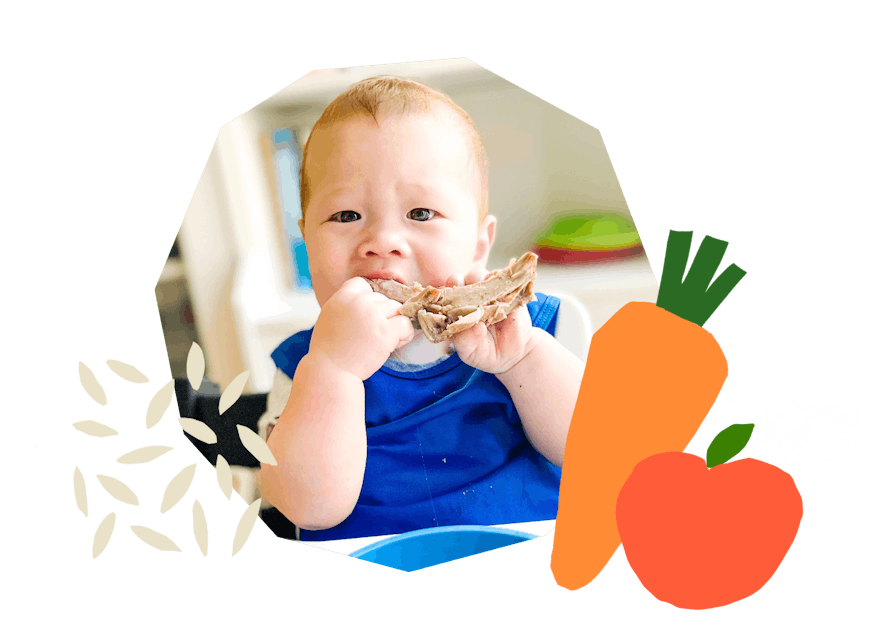
The Program Baby-Led Weaning with Katie Ferraro
A step-by-step digital program for starting solid foods safely and navigating the original 100 FIRST FOODS™ meal plan with baby-led weaning.
 EXPERT-LED, PROVEN APPROACH TO EATING REAL FOOD
EXPERT-LED, PROVEN APPROACH TO EATING REAL FOOD CONCISE VIDEO TRAININGS TO MASTER BABY-LED WEANING
CONCISE VIDEO TRAININGS TO MASTER BABY-LED WEANING 100 FIRST FOODS DAILY MEAL PLAN WITH FOOD PREP VIDEOS
100 FIRST FOODS DAILY MEAL PLAN WITH FOOD PREP VIDEOS
Baby-Led Weaning for Beginners Free Workshop
Is your baby ready to start solid foods, but you’re not sure where to start? Get ready to give your baby a solid foundation to a lifetime of loving real food…even if you’re feeling overwhelmed or confused about this next stage of infant feeding.
Get baby-led weaning recipes and tips delivered to your email inbox.

